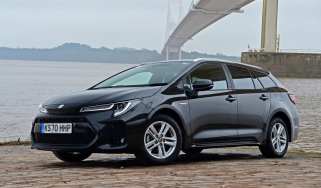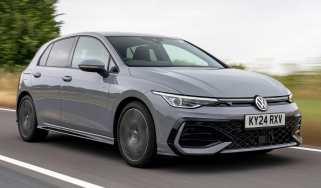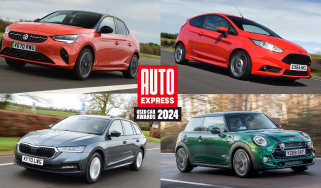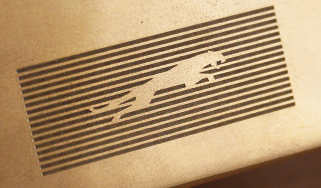Ford Fiesta EcoBoost
Facelift aims to give the supermini best seller a new lease of life
The latest Fiesta looks set to continue Ford’s massive sales success. Award-winning engine technology and class-leading driving dynamics combine to create an impressively rounded supermini that sets a tough new benchmark for all its competitors to follow – despite the meagre equipment count.
Ford has topped the UK sales charts since the current Fiesta was launched in 2008. But it won’t have been happy to see the car lose its title as Auto Express’s favourite supermini. To help the Ford Fiesta take on newer rivals, and return to winning ways, the brand has carried out a significant mid-life refresh.
The outgoing Fiesta was no wallflower, but several cosmetic tweaks have given the latest car a far bolder design. The wide chrome grille is inspired by the Ford Fusion concept, and will appear on the new Mondeo at launch next year. Slimmer headlights and a subtle power bulge in the bonnet give the supermini a meaner front end, but the rear view is more familiar.
Restyled tail-lights are the only clue that this is a new car, and overall it’s a bit underwhelming next to the dramatic looks of the Renault Clio and Peugeot 208. Our Zetec model also rides on small 15-inch alloys that appear absolutely tiny.
More reviews
Car group tests
- Ford Fiesta vs SEAT Ibiza: a used budget supermini dance-off
- Complete Ford Fiesta review: every generation tested as production ends
- Ford Fiesta ST vs Volkswagen Polo GTI vs Hyundai i20 N: 2022 group test review
- Ford Fiesta vs Skoda Fabia vs Toyota Yaris: 2022 group test review
In-depth reviews
Road tests
Used car tests
Yet while the Fiesta doesn’t have its rivals’ visual impact, it’s still a smart supermini and the design is more grown-up than ever. This new-found maturity is evident inside, too – darker plastics and new gloss black inserts on the doors and centre console give the car a more upmarket feel. Some of the materials lower down do still feel cheap, but the major controls – like the gearlever and steering wheel – are solid and well finished.
The button-heavy centre console and small central dot-matrix display look dated compared with the Clio’s flashy colour touchsceen, but the Fiesta’s conventional layout is intuitive and the neat steering wheel-mounted audio buttons are as easy to use as the Clio’s column-mounted controls.
This mid-spec Zetec version doesn’t have as much standard equipment as its rivals, but extras like DAB radio and SYNC Bluetooth (which includes audio streaming, phone connectivity and voice activation) come in reasonably priced packs – £300 for both. Plus, some unique gadgets help give the Fiesta an edge over its competitors.
The pick of these is MyKey. This lets the owner programme various functions, including the traction control, top speed and radio volume, and personalise these settings to a specific key. So parents of teenage drivers have the peace of mind of controlling these functions while their kids are driving alone.
Under the bonnet is Ford’s 1.0-litre three-cylinder EcoBoost petrol engine, which we’ve tried before in the Focus and B-MAX. But the Fiesta feels like its natural home. Our car had the 99bhp entry-level version, yet still raced away from its rivals at the test track.
It was nearly 2.5 seconds up on the Renault in the sprint from 0-60mph, with a time of 10.1 seconds, and even further ahead in-gear, thanks to the impressive 170Nm of torque delivered at a low 1,400rpm.
This extra performance makes the Fiesta feel far more responsive, but it also translates to greater refinement on the road and means it’s easier to drive.
Each car here uses a three-cylinder engine, but the Ford’s has the least intrusive exhaust note and, unlike the Clio, offers smooth acceleration throughout the rev range. The Fiesta was also the most comfortable car on bumpy back roads, while wind and road noise are less intrusive than in its rivals. Precise steering and a supple chassis add to the appeal.
Despite this strong turn of speed, the new model emits just 99g/km of CO2 – so it’s exempt from road tax. It’s just a shame we only managed to return 37.3mpg on test.
Away from the track, the Ford also scores for practicality. Its load capacity is marginally the smallest, at 276 litres, but the boot is wide and flat. The rear seats offer more headroom than the 208’s, too, and are mounted lower, so they give a better view out than the Clio’s. The wide rear screen makes reversing simple, too, and there are fewer blind spots than in either rival.
Our £14,245 Fiesta test car matches the Clio on price, but has a higher-quality feel, reflected by its 42.8 per cent residual value after three years; the Renault retains 39.3 per cent. Add big dealer discounts, and the Ford looks good value – and a strong bet to regain class honours.




